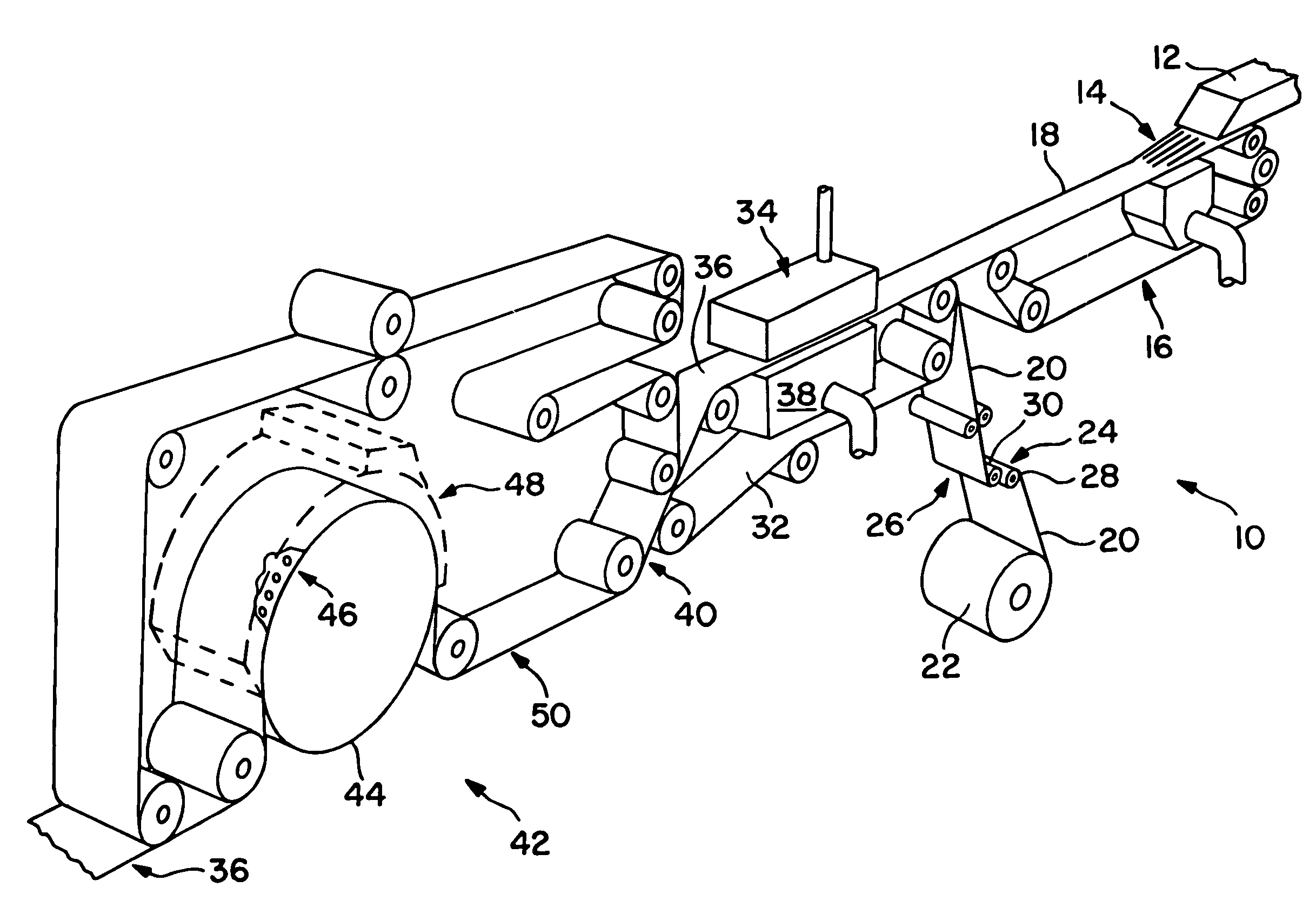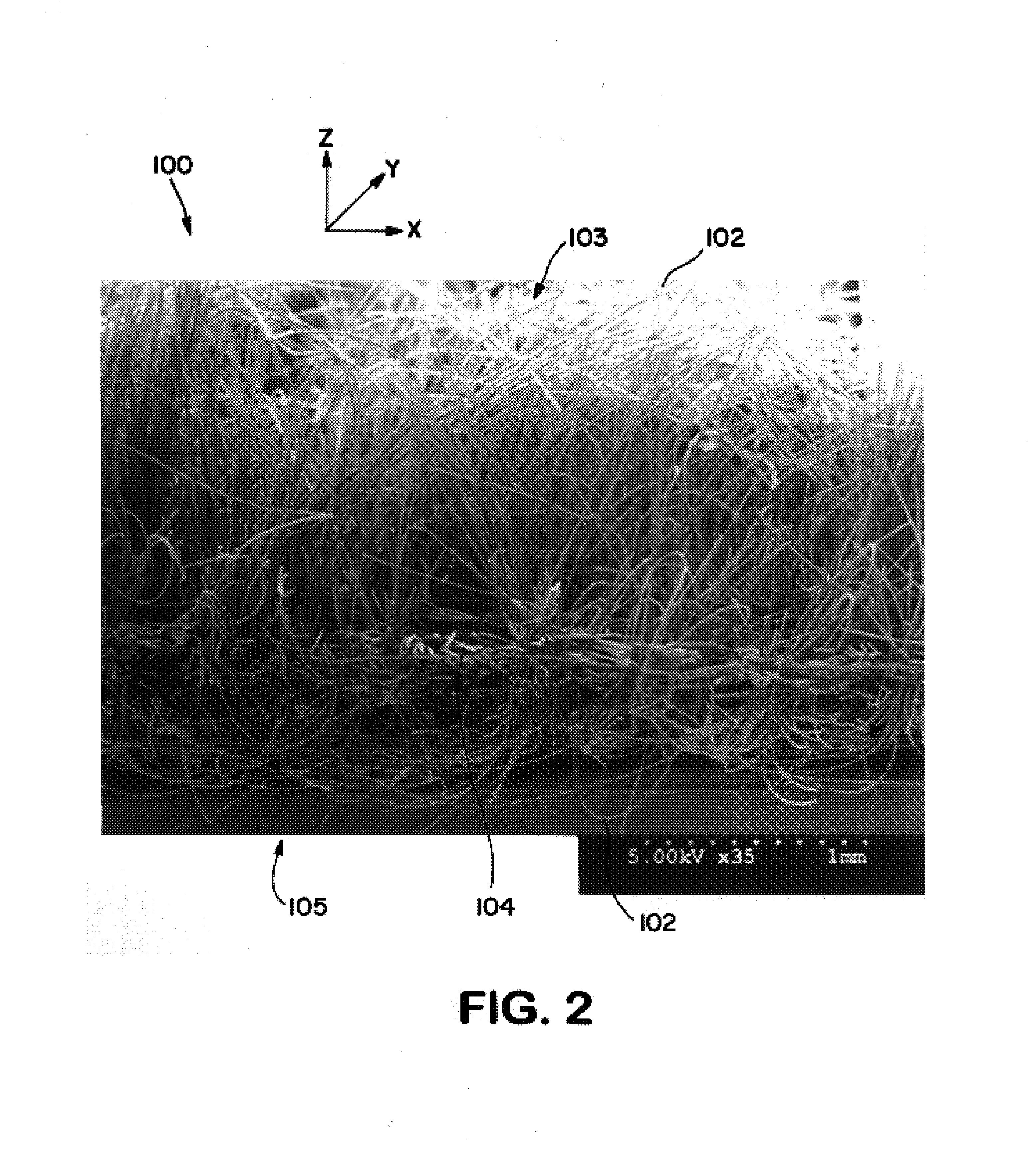Soft and bulky composite fabrics
a composite fabric, soft and bulky technology, applied in the field of soft and bulky composite fabrics, can solve the problems of not being desirable for use on abrasive or rough surfaces, fabrics possessed good strength, often exhibited inadequate softness and handfeel, and nonwoven composite fabrics still lack the level of softness and handfeel required to give them a “clothlike” feel
- Summary
- Abstract
- Description
- Claims
- Application Information
AI Technical Summary
Benefits of technology
Problems solved by technology
Method used
Image
Examples
example 1
[0072]The ability to form a composite fabric in accordance with the present invention was demonstrated.
[0073]Twenty (20) different samples were formed from synthetic staple fibers having an average fiber length of 6.35 millimeters (lyocel and / or polyester) and optionally pulp fibers using a low consistency wet-lay papermaking machine as is well known in the art. The lyocel fibers had a denier per filament of 1.5, and were obtained from Engineered Fibers Technologies, Inc. of Shelton, Conn. under the name “Tencel.” The polyester fibers were monocomponent fibers having a denier of 1.5, and were obtained from Kosa under the name “Type 103.” The pulp fibers contained 50 wt. % northern softwood kraft fibers and 50 wt. % southern softwood kraft fibers. For some samples, polyvinyl alcohol fibers were also added prior to forming the staple fiber web to enhance its dry strength prior to entanglement. The polyvinyl alcohol fibers were obtained from Kuraray Co., Ltd. of Osaka, Japan under the ...
example 2
[0082]The ability to form a composite fabric in accordance with the present invention was demonstrated.
[0083]Seven (7) different samples were formed from synthetic staple fibers having an average fiber length of 3.175 millimeters (lyocel and / or polyester) and optionally pulp fibers using a high consistency wet-lay papermaking machine as is well known in the art. The lyocel fibers had a denier per filament of 1.5, and were obtained from Engineered Fibers Technologies, Inc. of Shelton, Conn. under the name “Tencel.” Two types of polyester fibers were utilized. The first type was monocomponent polyester fibers (denier of 1.5) obtained from Kosa under the name “Type 103.” The second type was bicomponent polyester fibers (denier of 3) obtained from Kosa under the name “Type 105.” In addition, the pulp fibers contained 50 wt. % northern softwood kraft fibers and 50 wt. % southern softwood kraft fibers. The resulting wet-laid staple fiber webs had a basis weight ranging from about 30 to ab...
PUM
| Property | Measurement | Unit |
|---|---|---|
| length | aaaaa | aaaaa |
| length | aaaaa | aaaaa |
| length | aaaaa | aaaaa |
Abstract
Description
Claims
Application Information
 Login to View More
Login to View More - R&D
- Intellectual Property
- Life Sciences
- Materials
- Tech Scout
- Unparalleled Data Quality
- Higher Quality Content
- 60% Fewer Hallucinations
Browse by: Latest US Patents, China's latest patents, Technical Efficacy Thesaurus, Application Domain, Technology Topic, Popular Technical Reports.
© 2025 PatSnap. All rights reserved.Legal|Privacy policy|Modern Slavery Act Transparency Statement|Sitemap|About US| Contact US: help@patsnap.com



